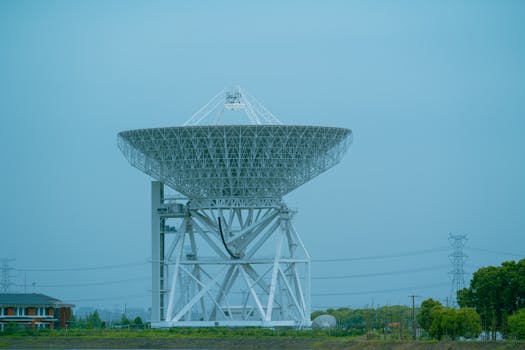Exploring the History of Satellite Development and Key Milestones: Satellite

Satellite development has a long and storied history that spans several decades. Satellite technology has come a long way since the launch of the first artificial satellite, Sputnik, in 1957. Since then, numerous milestones have been achieved, from the first commercial communications satellite to the modern-day satellite constellations that provide global coverage and connectivity.
The early years of satellite development were marked by intense competition between the United States and the Soviet Union. The launch of Sputnik 1, a small beach-ball-sized satellite, marked the beginning of the space age and sparked a wave of interest in space exploration. The United States responded with the launch of Explorer 1, the first successful American satellite, in 1958. These early satellites were simple in design and function, but they paved the way for the development of more complex and sophisticated satellite systems.
The 1960s saw the launch of the first commercial communications satellite, Intelsat 1, also known as Early Bird. This satellite was launched in 1965 and provided the first transatlantic television transmission. The success of Intelsat 1 led to the development of more advanced communications satellites, including the Intelsat 2 and Intelsat 3 series, which provided global coverage and connectivity.
The 1970s and 1980s saw the launch of several notable satellite programs, including the Landsat and GOES series. The Landsat program, launched in 1972, provided the first satellite-based remote sensing capabilities, allowing for the collection of data on the Earth’s natural resources. The GOES series, launched in 1975, provided the first geostationary weather satellites, allowing for real-time monitoring of weather patterns.
In recent years, there has been a significant increase in the number of satellite launches, driven in part by the development of new technologies and the increasing demand for satellite-based services. The launch of the first satellite constellation, Iridium, in 1998, marked the beginning of a new era in satellite development. Iridium provided global coverage and connectivity, and paved the way for the development of other satellite constellations, such as Globalstar and OneWeb.
Today, satellite technology plays a critical role in a wide range of applications, from communications and navigation to weather forecasting and remote sensing. The development of new technologies, such as satellite-based internet and 5G networks, is expected to further increase the demand for satellite-based services. As the industry continues to evolve, it is likely that we will see new and innovative applications of satellite technology, from the development of lunar and Mars missions to the creation of satellite-based solar power systems.
In conclusion, the history of satellite development is a rich and fascinating field that has led to numerous breakthroughs in space exploration and communication. From the launch of the first artificial satellite to the modern-day satellite constellations, the industry has come a long way. As we look to the future, it is likely that satellite technology will continue to play a critical role in shaping our world and enabling new and innovative applications.

